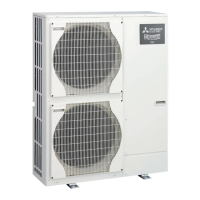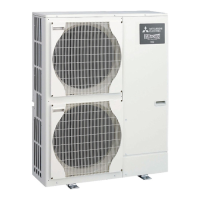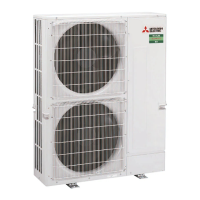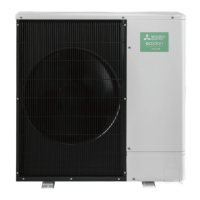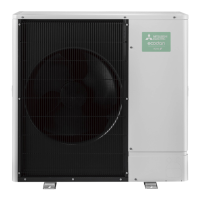SERVICE MANUAL
CONTENTS
1. REFERENCE MANUAL
...................................
2
2. SAFETY PRECAUTION
...................................
3
3. SPECIFICATIONS
..........................................
10
4. DATA
.............................................................
13
5. OUTLINES AND DIMENSIONS
.....................
14
6. WIRING DIAGRAM
........................................
15
7. WIRING SPECIFICATIONS
...........................
17
8. REFRIGERANT SYSTEM DIAGRAM
...............
18
9. TROUBLESHOOTING
...................................
19
10. DISASSEMBLY PROCEDURE
......................
68
Notes:
• This manual describes service
data of outdoor unit only.
R32
PARTS CATALOG (OCB748)
AIR TO WATER HEAT PUMP
No. OCH748
August 2020
<Outdoor unit>
[Model Name]
PUZ-HWM140VHA
PUZ-HWM140YHA
Salt proof model
PUZ-HWM140VHA-BS
PUZ-HWM140YHA-BS
[Service Ref.]
PUZ-HWM140VHA
PUZ-HWM140YHA
PUZ-HWM140VHA-BS
PUZ-HWM140YHA-BS
